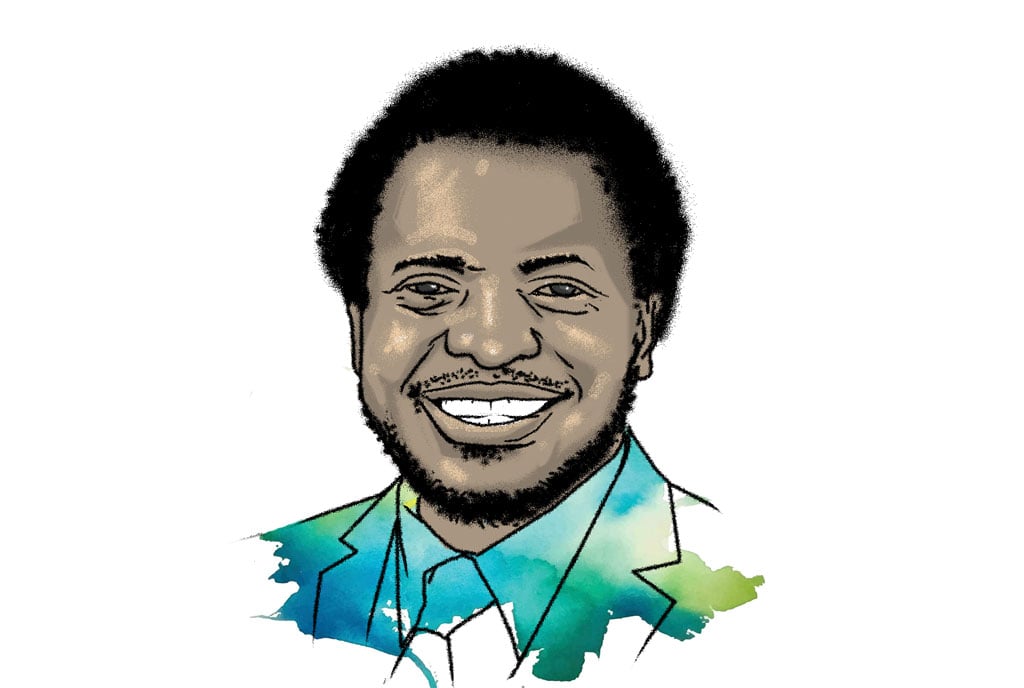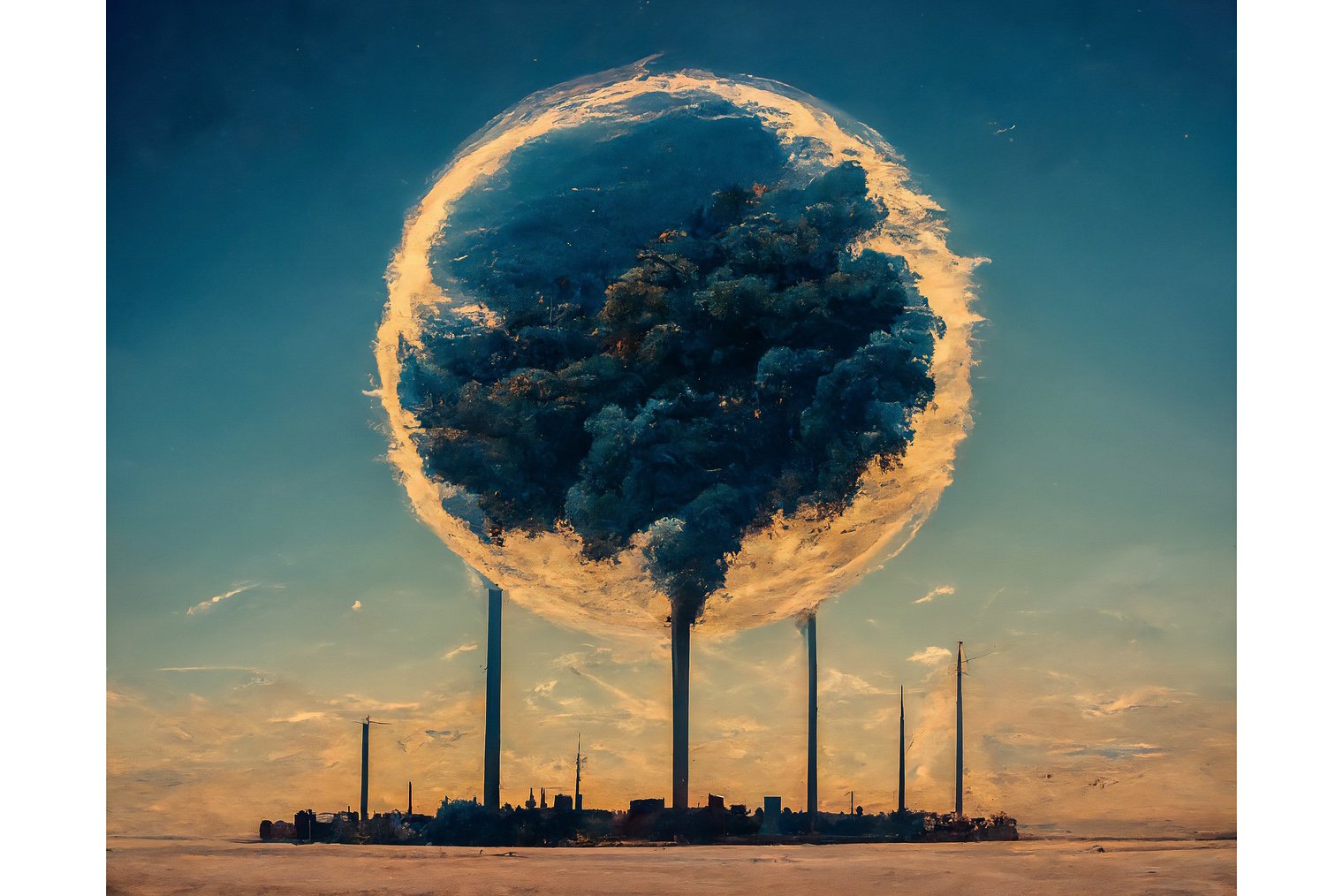
Peter Benhur Odokonyero Nyeko. PHOTO/ILLUSTRATION
He was born in the small town of Kitgum in northern Uganda where he was christened Peter Benhur Odokonyero Nyeko—something that means “the one who laughs.” But when he speaks, his crisp accent makes you second-guess his Ugandan roots.
His voice flows effortlessly, matching his calm demeanour and perfectly complementing his sharp suits, bascots, and ties—an ensemble that exudes corporate elegance.
“I believe I am a Ugandan,” he said one time when he was asked to be clear about that. “And the values are painted right here,” he added, stretching his hand to touch his tie that’s crafted in the Ugandan flag colours.
“Being a Ugandan is all about values and we sing about it in our national anthem. It’s about the values that we walk with as we go through the streets each day. It’s the value of gratitude. It’s the value of hope. The values of resilience and the values of finding joy in everything,” he compassionately says this with gratitude as if something is in the air around him.
Nyeko has made a significant impact in Nwoya District, 333 kilometres north of Kampala, by turning waste into energy and harnessing sunlight for power, all while helping farmers boost their yields. He’s also been to Lamwo, Kiryandongo, and Adjumani districts, where he’s weaving together the refugee, agriculture, and tourism ecosystems into a productive triangle, as he puts it.
“In between that, there is an opportunity to always make a difference, figure out what the needs are, and have an awesome time creating solutions in tandem with the community,” he once said when interviewed two years back on a streaming channel.
Kiira Motors
We met at Kiira Motors Corporation, arguably Africa’s leading electric vehicle manufacturer. The company, poised to launch mass production at its new Jinja plant, had previously relied on National Enterprise Corporation, where producing a single order took 14 days.
Now, there’s a palpable belief among the team that Kiira Motors will soon electrify Uganda’s streets, tackling the country’s unsustainable mobility issues—high traffic, limited cargo options, and pollution from gas-fuelled vehicles that even strain the exchange rate. It looks at producing 11 automobiles per day starting October this year.
The national assembly seems indifferent, believing the Shs300 billion in equity they’ve invested is sufficient for Kiira Motors to stabilise. However, that funding only covered facility setup. Now, the company is tirelessly lobbying for an additional Shs500 billion as running capital to kick-start operations in October with a substantial and diverse stock.
CEO Paul Musasizi shared that they expect to break even within two years of launching mass production, aiming to produce 2,500 buses annually—or 200 buses per month. But questions of the market have been lingering. Automakers of that sort are struggling to keep operations at full capacity because of the hurdles in the market due to selling new unknown cars (in technology to a large section of people) with limited charging infrastructure and are even expensive to buy. It’s bothering even the big automakers like Tesla and Ford.
Carbon credits
Nyeko, a climate scientist and investor, introduces the intriguing yet often overlooked concept of carbon offsets—a potential revenue goldmine for Kiira Motors once production begins. Carbon offsets have surged in popularity, offering individuals and organisations in wealthy nations a quick way to fight climate change.
These entities claim that emissions in the rich world can be neutralised by buying credits from carbon-sequestering projects in poorer regions. Whether it’s planting trees, preserving forests, or investing in decarbonising technologies like renewable energy, the idea is that small payments can offset the emissions generated by everyday activities, marking a positive impact on the global carbon ledger.
“We all know that with normal vehicles that use diesel and petrol, we burn hydrocarbons, and these do release carbon dioxide into the air as they produce energy. With electric vehicles, you don’t burn any diesel or petrol, which basically means that if there was an income to be earned from not burning hydrocarbons, which is an opportunity,” he tells Lunch with the DM.
“People pay you when you don’t emit carbon dioxide, and for every tonne of carbon dioxide, you can go from anything from about $30 to over $500. Countries like Tesla, which make over one million cars a year, make close to $2 billion a year in carbon credits. Carbon credits can be earned in different ways, from carbon offsetting gasoline, carbon removals replacing carbon on locking them on the ground, and also renewable energy credits for every megawatt hour of clean energy produced,” he adds.
Nyeko tells Lunch with the DM that he sees “within these opportunities something really exciting.” He sees “Kiira Motors as exciting for our nation as the oil and gas sector, numerically, mathematically, and financially speaking.” Numbers elsewhere offer support.
In 2023, around 12.5 billion metric tonnes of carbon permits traded in global emissions markets, matching 2022 levels, Reuters reported early this year, adding that record prices in regions like Europe and North America boosted the overall market value.
Lucrative
Carbon dioxide emissions are priced at emissions trading systems (ETS) in various countries and regions, incentivizing companies to invest in low-carbon technologies and meet climate targets.
“At the moment, we know Kiira Motors can produce today about 5,000 buses a year. Each bus travels around 500 kilometres a day. That’s on average 200 tonnes of carbon dioxide removed every year. At a price of $50 per ton, that would be $1 billion worth of carbon credits by 2045,” he says.
“If we look at this facility—100 acres with well over 400,000 tonnes of sand used in its construction estimated. If that was replaced with agricultural waste or ash from the farmers around us, that’s another million tons of carbon dioxide stored at a price of $200 per tonne—over $200 million,” he adds.
As he explains this maths while using his cellphone, sound interrupts briefly but he is not taken aback. He suggests that if Kiira Motors covered its 80-acre factory space with solar panels, generating over 20 megawatts, the facility could not only earn income from electricity but also secure renewable energy credits—potentially over $200 million by 2045. This could create a $1.4 billion opportunity. A Ministry of Science, Innovation and Technology official mentioned that expanding production to 150,000 vehicles annually could push this figure to $3.5 billion each year in carbon credits for the government of Uganda.
“That means, in just 20 years, Kiira Motors would have earned the $70 billion, which UNOC (Uganda National Oil Company) tells us the oil and gas sector will earn in 30 years. So we are really proud of Kiira Motors because it can really take Uganda forward,” Nyeko, who is also the CEO of Mandulis Energy, beams.
Public buy-in
But how can we all get involved if we are not Kiira Motors? Nyeko explains that switching from charcoal to clean cooking options like electricity can earn you carbon credits, as many clean stove providers are involved in carbon credit schemes. Planting trees or bamboo also generates credits. By researching and negotiating with suppliers, you could secure discounts or even share carbon revenue, he says, adding that even Kiira Motors might reduce bus prices or benefit investors in charging stations after getting these revenues from carbon credits, helping to lower costs and risks.
This, he further notes, could guarantee equity investors in this space 30x returns as the green future unfolds. Uganda has many of them from Innovex that’s transforming the distribution of off-grid energy and equipment using the Internet of Things, Fabstove that’s promoting reuse of waste rice husks pellets as biomass cooking fuel, and many more.
Every country has committed to reducing carbon emissions through various agreements. Uganda joined this global effort by passing a sustainability act through parliament in 2021, aligning with international standards. Nyeko notes that big banks have long been buying carbon credits, much like our daily coffee.
Soon, the European Union will impose a carbon tax on all imports based on their carbon footprint. This means Ugandan exports, including coffee and fruits, will also face this tax. In a few years, exporters will need to buy carbon credits from local sources like Kiira Motors or other providers to meet EU requirements.
What started as a global trend among major banks and companies is now affecting our agricultural exports, he stressed. With climate change approaching a tipping point, carbon trading is crucial. The Intergovernmental Panel on Climate Change has stressed that the 2020s are vital for limiting global warming.
If carbon offsets are to play a major role in reducing emissions, it’s essential for consumers to fully understand what they’re purchasing—a task that, as it turns out, is more complex than it seems.







